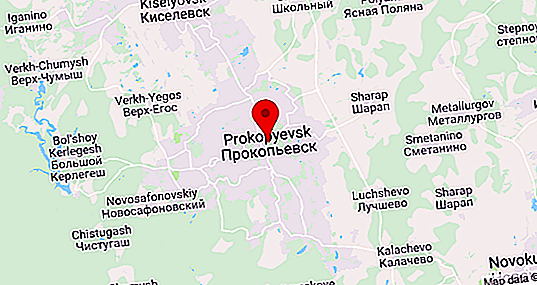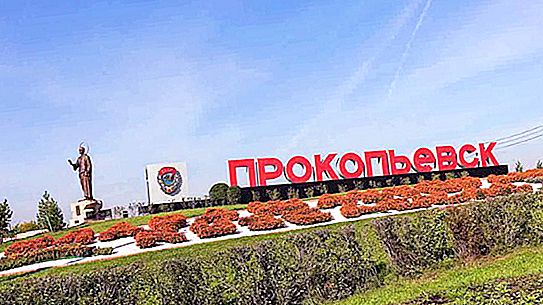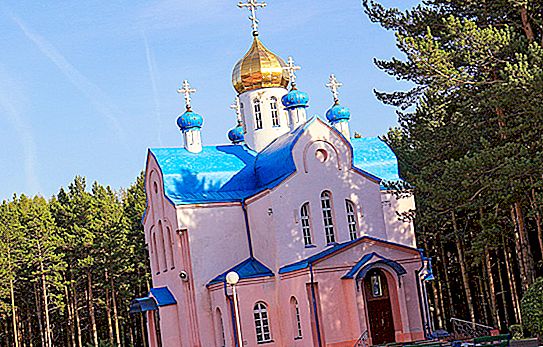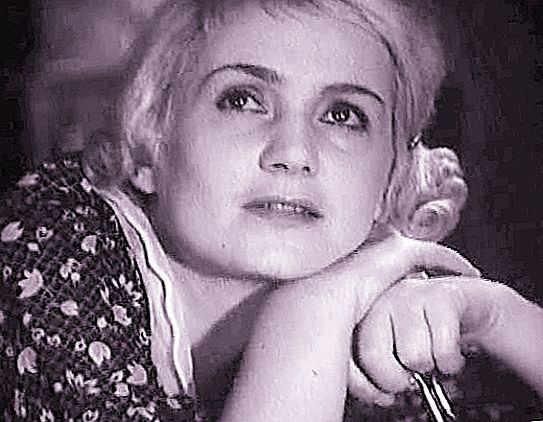The old mining town of Siberian standards, Prokopyevsk, became a major industrial center in Soviet times. Now it is going through hard times, many industrial enterprises have long been closed, as well as part of the mines. The population of Prokopyevsk decreased by almost a third compared to the best years.
Geographic information
The city is located on the banks of the Aba River (a tributary of the Tom) in the foothills of the Salair Ridge, in the southern part of Western Siberia. At a distance of 270 km to the north-west is the regional center - Kemerovo. The ecological situation, as in the entire Kuzbass, is not very favorable, “black snow” due to coal dust is also not uncommon here. The area of the city is 227.5 square meters. km

The climate in the region is sharply continental with long cold winters and short hot summers. Despite the harsh winter, the cold is tolerated quite easily, due to low humidity. The average temperature in the coldest month - January - minus 25. In the hottest (July) - plus 19.
General information

This city of regional subordination is the administrative center of the eponymous district and urban district. In terms of population, Prokopyevsk is in third place in the densely populated Kemerovo region. It is one of the oldest cities in the region.
The Russian government categorized it as a city with a very difficult socio-economic situation. The official name of the townspeople is prokopchane (men - prokopchane, women - prokopchanka).
Prokopyevsk is one of the key centers for coking coal production in the country, now there is one mine named after Dzerzhinsky (of 16 formerly working) and the Berezovsky open pit. In Soviet times, the city was the center of mechanical engineering, now most of the enterprises are closed, operate mainly serving the work of the coal mining industry. In 2009, the first phase of the Novotrans car repair plant was opened.
The city railway station sends and receives trains running through Novokuznetsk and trains to nearby cities. The population of Prokopyevsk uses the Novokuznetsk airport. From the bus station, 63 flights are carried out daily in various directions.
Early years
The city was formed by the merger of several ancient villages, including Usyat, Safonovo, Monastyrskaya. The Kuznetsk fort was built in 1618, in 1648 the Christ Nativity Monastery was founded and not far from it was the village of Monastyrskoe.

It was founded by peasants working at the monastery. The settlement was replenished by peasants who received loans from the monks - land, grain, cattle. For the first time, the village was noted by the Russian cartographer Remizov S. in the “Drawing Book of Siberia”, written in 1699-1700.
By the middle of the 19th century, the village of Monastyrskaya began to be called Prokopyevsky village in honor of Prokopy Ustyuzhsky. In 1859, there were 21 courtyards in the village. The population of Prokopyevsk was 140 inhabitants. The sociologist and economist VV Bervi-Flerovsky, who was serving exile in these places, noted the extreme poverty of the peasants, who even for a few cattle did not have enough hay for the winter. Animals often died of starvation or were sold cheaply.
In 1911, the village became the center of the volost in the Tomsk province.
According to the census of those years, there were 157 yards in the settlement, land was 7, 245 acres, the population of Prokopyevsk totaled 864 people. An oil factory, a bakery, two manufactory shops, a church and a parish school worked in Prokopyevsky. Most villagers were descendants of the first settlers. In 1916, the development of coal deposits began by the Franco-German-Belgian company.




